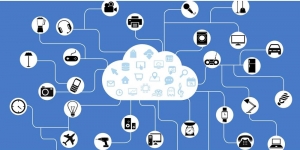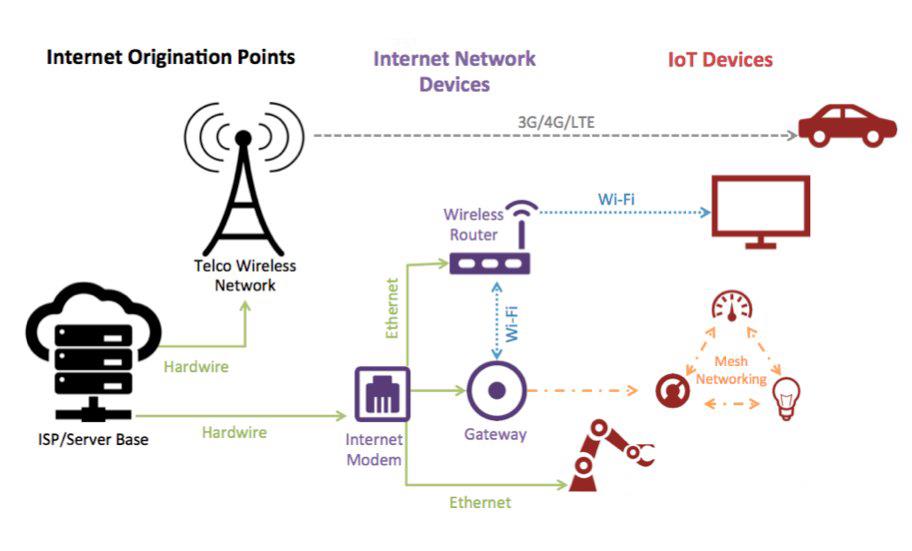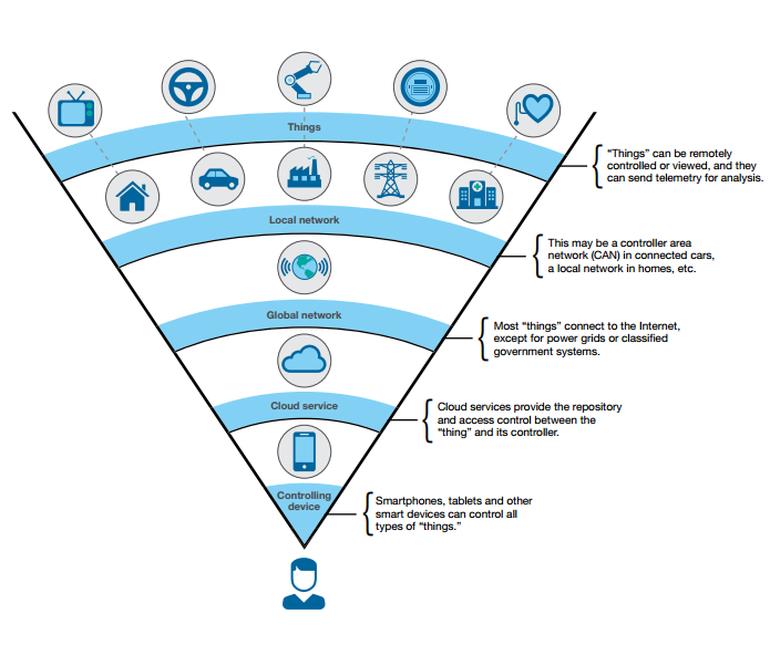What is Internet of Things?
IoT refers to billions of physical devices around the world that are now connected to the internet, collecting and sharing data. Thanks to cheap processors and wireless networks, it’s possible to turn anything, from a pill to an aeroplane, into part of the IoT. This adds a level of digital intelligence to devices that would be otherwise dumb, enabling them to communicate without a human being involved, and merging the digital and physical worlds.
What is an example of an IOT device?
Pretty much any physical object can be transformed into an IoT device if it can be connected to the internet and controlled that way. A lightbulb that can be switched on using a smartphone app is an IoT device, as is a motion sensor or a smart thermostat in your office or a connected streetlight. An IoT device could be as fluffy as a child’s toy or as serious as a driverless truck, or as complicated as a jet engine that’s now filled with thousands of sensors collecting and transmitting data. At an even bigger scale, smart cities projects are filling entire regions with sensors to help us understand and control the environment.
The term ‘IoT’ is mainly used for devices that wouldn’t usually be generally expected to have an internet connection, that can communicate with the network independently of human action. For this reason, a PC isn’t generally considered an IoT device and neither is a smartphone — even though the latter is crammed with sensors. A smartwatch or a fitness band might be counted as an IoT device, however.
What is the history of IOT?
“The IoT integrates the interconnectedness of human culture — our ‘things’ — with the interconnectedness of our digital information system — ‘the internet.’ That’s the IoT,” Adding RFID tags to expensive pieces of equipment to help track their location was one of the first IoT applications. But since then, the cost of adding sensors and an internet connection to objects has continued to fall, and experts predict that this basic functionality could one day cost as little as 10 cents, making it possible to connect nearly everything to the internet. The IoT was initially most interesting to business and manufacturing, where its application is sometimes known as machine-to-machine (M2M), but the emphasis is now on filling our homes and offices with smart devices, transforming it into something that’s relevant to almost everyone.
Early suggestions for internet-connected devices included ‘blogjects’ (objects that blog and record data about themselves to the internet), ubiquitous computing (or ‘ubicomp’), invisible computing, and pervasive computing. However, it was the Internet of Things and IoT that stuck. The idea of adding sensor and intelligence to basic objects was discussed throughout the 1980s and 1990s (and there are arguably some much earlier ancestors), but apart from some early projects — including an internet-connected vending machine — progress was slow simply because the technology wasn’t in place.

Processors that were cheap and power-frugal enough to be all but disposable were required before it became cost-effective to connect up billions of devices. The adoption of RFID tags– low-power chips that can communicate wirelessly — solved some of this issue, along with the increasing availability of broadband internet and cellular and wireless networking. The adoption of IPv6 — which, among other things, should provide enough IP addresses for every device the world (or indeed this galaxy) is ever likely to need — was also a necessary step for the IoT to scale. Kevin Ashton coined the phrase ‘Internet of Things’ in 1999, although it took at least another decade for the technology to catch up with the vision.
The Internet of Things and smart homes
For consumers, the smart home is probably where they are likely to come into contact with Internet-enabled things, and it’s one area where the big tech companies (in particular Amazon, Google, and Apple) are competing hard. The most obvious of these are smart speakers like Amazon’s Echo, but there are also smart plugs, light bulbs, cameras, thermostats, and the much-mocked smart fridge. But as well as showing off your enthusiasm for shiny new gadgets, there’s a more serious side to smart home applications. They may be able to help keep older people independent and in their own homes longer by making easier for family and carers to communicate with them and monitor how they are getting on. A better understanding of how our homes operate, and the ability to tweak those settings, could help save energy by cutting heating costs.
What about Internet of Things security?
Security is one the biggest issues with the IoT. These sensors are collecting in many cases extremely sensitive data — what you say and do in your own home, for example. . Hackers are now actively targeting IoT devices such as routers and webcams because their inherent lack of security makes them easy to compromise and roll up into giant botnets. Flaws have left smart home devices like refrigerators, ovens, and dishwashers open to hackers. Researchers found 100,000 webcams that could be hacked with ease, while some internet-connected smartwatches for children have been found to contain security vulnerabilities that allow hackers to track the wearer’s location, eavesdrop on conversations, or even communicate with the user. When the cost of making a device smart becomes negligible, these problems will only become more widespread and intractable.


How do IOT devices connect?
IoT devices use a variety of methods to connect and share data: homes and offices will use standard wi-fi or Bluetooth Low Energy (or even Ethernet if they aren’t especially mobile); other devices will use LTE or even satellite connections to communicate. However, the vast number of different options has already led some to argue that IoT communications standards need to be as accepted and interoperable as wi-fi is today.
One likely trend is that, as the IoT develops, it could be that less data will be sent for processing in the cloud. To keep costs down, more processing could be done on-device with only the useful data sent back to the cloud — a strategy known as ‘edge computing’.
Where does the Internet of Things go next?
As the price of sensors and communications continue to drop, it becomes cost-effective to add more devices to the IoT — even if in some cases there’s a little obvious benefit to consumers. As the number of connected devices continues to rise, our living and working environments will become filled with smart products — assuming we are willing to accept the security and privacy trade-offs. Some will welcome the new era of smart things.
Author : Raj Kumar Adapa
Source : :- https://www.zdnet.com/article/what-is-the-internet-of-things-everything-you-need-to-know-about-the-iot-right-now/
